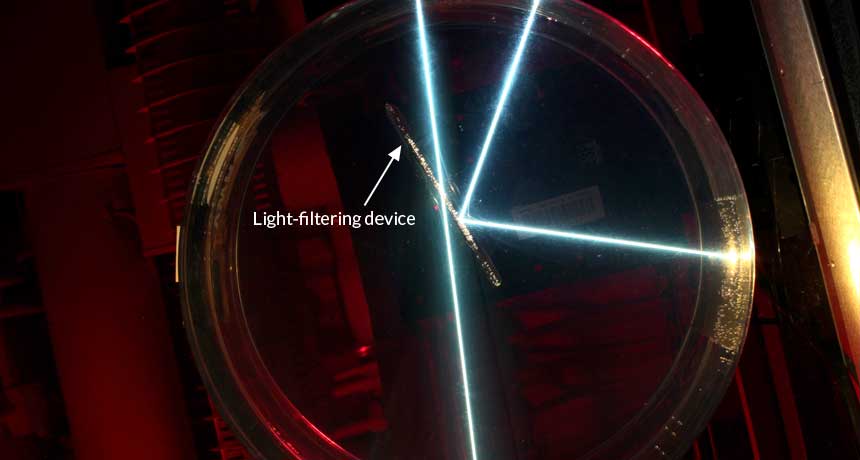Light filter lets rays through from only one direction
Angle-sensitive device could improve photography and solar energy harvesting

FILTERED A device made of glass and tantalum oxide filters light based on its incoming angle. The light ray coming in at 1 o’clock reflects off the filter. But the other beam streaks right through the device unimpeded.
Weishun Xu and Yuhao Zhang







